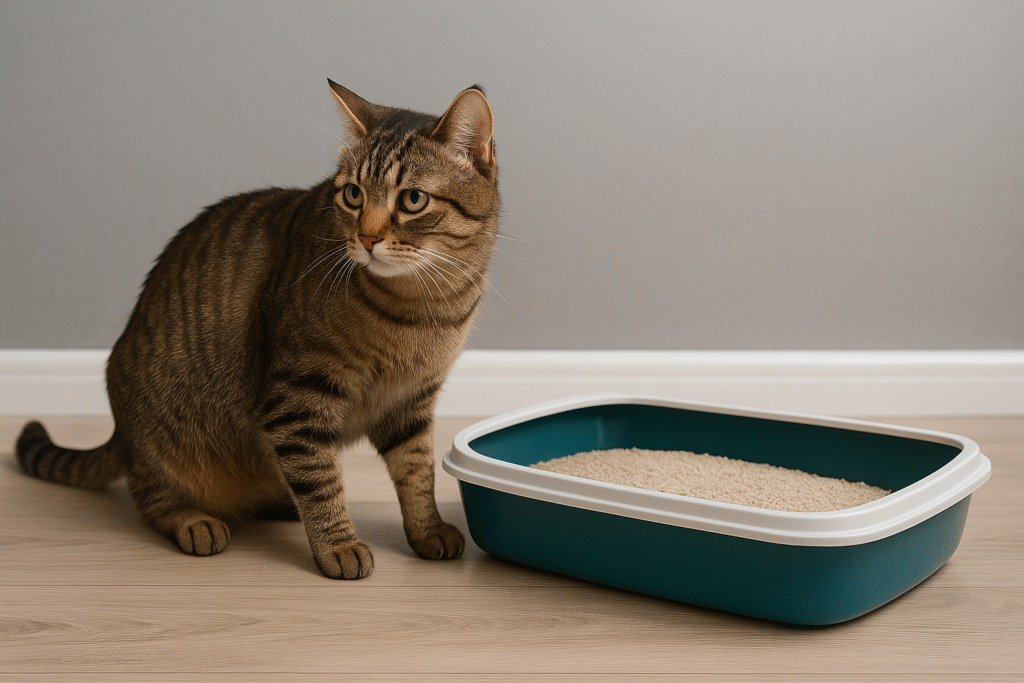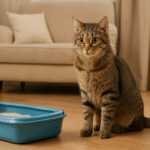Have you ever stared at a perfectly clean litter box and thought, “Wait… did my cat not pee today?”
Yeah. Been there.
The first time this happened with my cat Snickers, I honestly thought she was just being picky. But then she started pacing, squatting without results, and looking uncomfortable. That’s when I knew something was wrong.
Let’s be honest—cats are sneaky little weirdos, and sometimes it’s hard to know when they’re in trouble. But understanding their urinary habits can literally be the difference between a quick fix and an emergency vet visit.
How Long Can a Cat Go Without Peeing?
Most cats should urinate at least once every 24 hours. If your cat hasn’t peed in over 24 hours, get in touch with a vet immediately—especially if they seem uncomfortable or are trying but can’t go.
Even healthy cats can sometimes hold it longer, like during travel or if they’re nervous. But beyond that 24-hour mark, especially without any urine output, we’re entering dangerous territory—think urinary blockage, kidney damage, or worse.
So if you’re wondering how long can a cat go without peeing, just remember: 24 hours = red flag.
Signs Your Cat Isn’t Peeing Normally
You scoop regularly. You assume your cat’s fine. But are they actually going?
What to watch for:
- Frequent trips to the litter box with no results
- Straining, yowling, or squatting without peeing
- Peeing outside the box
- Lethargy or hiding
- Excessive grooming “down there”
- A hard, bloated belly

In Snickers’ case, I noticed she kept visiting the box, scratching, then just walking out. No clumps. Nothing. That’s when I panicked—and I’m glad I did.
Dehydration: The Silent Troublemaker
Did you know cats have a weak thirst drive by nature? In the wild, they’d get moisture from their prey. In your house? They’re snubbing that water bowl like it’s last week’s leftovers.
Why does this matter? Because dehydration can reduce urination and make crystals or stones more likely. These can lead to a painful, even deadly blockage.
| Preview | Product | Price | |
|---|---|---|---|

|
PETLIBRO App-Controlled Cat Water Fountain, Pet Water Fountain with Stainless Steel Tray, Water... |
$79.99 |
Buy on Amazon |
How to check if your cat’s dehydrated:
- Gently lift the skin between their shoulders. If it doesn’t snap back quickly, they might be low on fluids.
- Check gums—dry or sticky = possible dehydration.
- Not peeing regularly is also a major clue.
Try switching to wet food, adding water to meals, or offering a cat water fountain. Snickers drinks more when it’s moving—go figure.
Could It Be the Litter Box?
Here’s the thing: cats are super picky about where they go. If the box isn’t to their liking, they might just hold it.
Ask yourself:
- Is it clean?
- Is it easy to access? Especially for older cats?
- Is it in a quiet, private spot?
- Are you using a litter they like?
Try different textures and depths of litter. Snickers once boycotted hers because I switched brands without asking her permission. Lesson learned.
Stress Can Shut Things Down, Too
Cats are creatures of habit. A change in schedule, a new pet, a noisy appliance—you name it—can stress them out and make them stop peeing.
Ever had a cat go on “litter strike” during a move or vet visit? Totally normal—but still something to watch.
Ways to reduce stress:
- Keep a calm, consistent routine
- Use feline pheromone sprays or diffusers
- Give them a quiet safe zone
Snickers loves hiding in my laundry basket—no judgment.
Don’t Wait: When to See the Vet
Call your vet ASAP if:
- No urine in 24+ hours
- They’re straining or crying
- You see blood in the litter
- Your male cat can’t pee (this is a true emergency)
Better safe than sorry. I’ve had to do the 10 p.m. emergency vet scramble, and trust me—you don’t want to wait.
Ways to Help Your Cat Pee More Comfortably
Simple changes can make a big difference:
- Add more water-rich foods
- Place extra water bowls around the house
- Try a pet water fountain
- Keep litter boxes pristine
- Use low-sided boxes for senior cats
Keeping the litter box clean is crucial—but if daily scooping is a challenge, you might want to try a self-cleaning litter box to make things easier for both you and your cat.
Also talk to your vet about food that supports urinary health. Some prescription diets can help prevent blockages and reduce inflammation.
| Preview | Product | Price | |
|---|---|---|---|

|
Hill's Prescription Diet c/d Multicare Urinary Care Chicken & Vegetable Stew Wet Cat Food,... |
$61.97 |
Buy on Amazon |
FAQ
Over 24 hours is dangerous. Especially in male cats, it can mean a blockage. Don’t wait—call your vet.
Yes. Big changes or anxiety can lead to urinary retention or inflammation.
Yes. Cats hide discomfort well. If there’s no pee in 24 hours, something’s wrong.
Some cats do, but it should be consistent. Any sudden change needs attention.
Use a water fountain, offer wet food, or add broth to meals.
Final Thoughts From a Worried (and Wiser) Cat Mom
If you’re still wondering how long can a cat go without peeing, let this be your gentle nudge:
24 hours is the magic number.
Snickers taught me that the hard way—but now I know the signs, and you do too. Whether it’s dehydration, stress, or something more serious, acting fast matters.
Keep an eye on that litter box. Listen to your gut. And never, ever feel silly calling your vet. You’re your cat’s advocate—and they’re counting on you.





